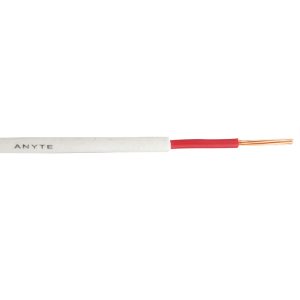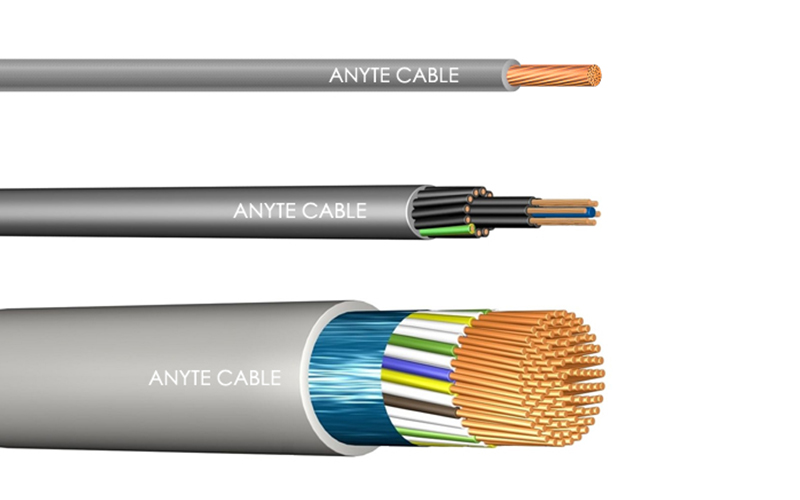In the world of electrical installations and industrial applications, selecting the right type of power cable is crucial to ensuring safety, reliability, and cost-effectiveness. One popular option that has gained attention over the years is the РВ-К cable. Designed specifically for demanding environments, they are known for their robustness, flexibility, and ability to handle both low and medium voltage power transmissions. But how does it compare to other power cables? In this article, we will explore the key features, advantages, and limitations of RV-K cables in comparison to other commonly used power cables in the industry.
What is an RV-K Cable?
Before diving into comparisons, it’s essential to understand what makes it unique. It is a type of flexible power cable made with copper conductors and a thermoplastic (PVC) or thermosetting (XLPE) insulation material. It is designed to operate under harsh conditions and is commonly used in industrial plants, public buildings, and infrastructure projects. The main applications for it include supplying power to motors, transformers, and low-voltage installations, as well as transmitting electricity to machinery and equipment in construction and industrial environments.
The flexibility of RV-K makes it particularly well-suited for environments where the cable needs to be bent, coiled, or moved frequently. Its robust design also provides excellent resistance to mechanical stress, water, oil, and chemicals, making it a popular choice for outdoor installations and areas where environmental factors could degrade other types of cables.

Key Features of RV-K Cables
- Flexible Design: One of the standout features of RV-K is its flexibility, which is achieved by using finely stranded copper conductors. This flexibility allows for easier installation and handling in tight spaces or applications that require frequent movement.
- Wide Temperature Range: They are designed to operate effectively across a broad range of temperatures, typically from -15°C to +90°C. This makes them suitable for both indoor and outdoor use in various climates.
- High Mechanical Resistance: The cable’s outer sheath is made from durable materials that provide protection against physical damage, abrasion, and chemical exposure. This makes it highly resistant to wear and tear, even in industrial environments.
- UV and Water Resistance: It is often equipped with a UV-resistant outer sheath, allowing it to withstand prolonged exposure to sunlight. It is also designed to be waterproof, making it suitable for outdoor and underground installations where moisture is a concern.
- Compatibility with Low and Medium Voltage Applications: The cable is typically rated for low voltage (up to 1kV) and is frequently used in power distribution systems, construction sites, and manufacturing plants.
RV-K vs. H07RN-F Cable
One common comparison is between RV-K and H07RN-F cables, another widely used flexible power cable. H07RN-F is known for its durability and is often used in environments with mechanical stress or the presence of water, oils, and chemicals.
- Строительство: Both use copper conductors, but they differ in insulation materials. It have a thermosetting (XLPE) or thermoplastic (PVC) insulation, while H07RN-F uses rubber insulation. This gives H07RN-F better resistance to extreme temperatures, with a typical operating range from -25°C to +60°C.
- Гибкость: While both cables are flexible, H07RN-F is generally considered more flexible due to its rubber insulation, which makes it ideal for applications where the cable will be moved frequently. However, they offer sufficient flexibility for most industrial applications and they are often preferred when higher voltage ratings or greater mechanical strength are needed.
- Устойчивость к воздействию окружающей среды: Both cables offer good resistance to water and chemicals, but they may be better suited for outdoor installations due to their enhanced UV resistance. H07RN-F is commonly used in industrial environments where frequent handling or movement is required, such as in power tools and portable devices.
- Номинальное напряжение: It is typically used for applications that require higher voltage ratings than H07RN-F, which is generally used in low-voltage applications.

RV-K vs. NYY Cable
NYY cables are another popular choice, particularly for fixed installations. These cables are commonly used in power distribution and supply systems in buildings and industrial plants.
- Строительство: NYY cables typically have a solid or stranded copper conductor and are insulated with PVC. They are less flexible than RV-K cables due to their more rigid design, which makes NYY more suitable for fixed installations rather than dynamic applications where movement is involved.
- Гибкость: This is where it clearly outperforms NYY cables. The latter is designed for installations that remain stationary, while they can be bent and routed through tight spaces much more easily. In situations where flexibility is required, it is the better choice.
- Устойчивость к воздействию окружающей среды: Both offer good protection against water and chemicals, but it is generally considered more robust in terms of mechanical stress resistance. NYY cables are typically used in indoor or buried installations where physical stress is not a primary concern.
- Стоимость: NYY cables are generally more affordable than it. However, the additional cost of RV-K may be justified by its flexibility and superior performance in demanding environments.
RV-K vs. XLPE Insulated Power Cables
XLPE (Cross-Linked Polyethylene) insulated power cables are commonly used for high-voltage applications and are known for their excellent electrical properties and heat resistance.
- Insulation Material: While both use thermosetting insulation materials, it is generally used for low to medium-voltage applications, whereas XLPE cables are often designed for higher voltage systems, up to 500kV. XLPE insulation provides superior electrical properties, including lower dielectric loss and higher breakdown strength.
- Температурная стойкость: XLPE cables can typically operate in temperatures up to 90°C, similar to it, but they also have higher short-circuit temperature tolerance (up to 250°C), making them suitable for high-voltage applications where heat dissipation is critical.
- Гибкость: It is more flexible than XLPE insulated cables, which are often used in fixed installations. In environments that require frequent movement or flexibility, it is a better choice.
- Durability and Mechanical Strength: Both types of cables offer strong mechanical resistance, but RV-K may be more suitable for environments where cables are exposed to frequent movement or mechanical stress.
RV-K vs. Armored Cables (SWA)
Armored cables, such as Steel Wire Armored (SWA) cables, are designed for use in environments where mechanical protection is crucial, such as underground installations or areas with a high risk of physical damage.
- Строительство: SWA cables have an additional layer of steel or aluminum armoring around the cable to protect it from mechanical damage. It does not include this extra layer, which makes SWA more suitable for areas where the cable is exposed to high-impact forces or harsh physical environments.
- Гибкость: SWA cables are significantly less flexible than them due to their rigid armoring. If flexibility is a key requirement, it is a better choice, but if mechanical protection is the priority, SWA cables are more appropriate.
- Стоимость: Armored cables tend to be more expensive due to the additional protection they provide. However, the specific needs of the application should dictate whether the extra cost is justified.
Заключение
RV-K cables stand out for their flexibility, durability, and adaptability in a wide range of applications, particularly in industrial and construction environments. When compared to other power cables, such as H07RN-F, NYY, XLPE insulated cables, and armored cables, they offer a unique balance of mechanical strength, environmental resistance, and ease of installation. However, the choice between RV-K and other power cables depends on the specific requirements of the installation.
For applications requiring frequent cable movement, flexibility, and mechanical stress resistance, it is an excellent choice. It is particularly suited for outdoor, industrial, and underground installations where environmental factors like moisture, UV radiation, and chemicals could degrade less durable cables. In contrast, for fixed installations or high-voltage applications, other types of cables like XLPE or armored cables may be more appropriate. Ultimately, selecting the right cable type is a matter of balancing cost, performance, and environmental conditions to meet the specific needs of the project.




